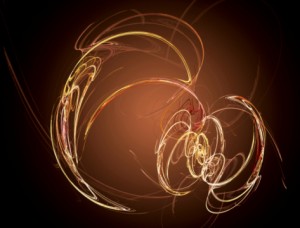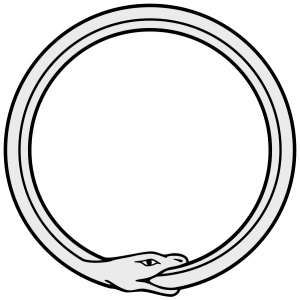Circus of Dreams (Part 13)
By Asher Crispe: December 3, 2012: Category Decoding the Tradition, Inspirations
To Light Up the Night
 Of all of the powers of the soul, the one that proves the most complex and challenging to describe is that of da’at or ‘knowledge.’ While, da’at or ‘knowledge’ would seem to be the legitimate child of the higher cognitive functions of chochmah (intuition) and binah (understanding), it cannot simply be reduced to being a combination or synthesis of its parents. In fact, there are times when da’at is superimposed as the connection between intuition and understanding and on other occasions it even ascends to a higher plane whereby it rises over the faculties that are normally thought of as its cognitive progenitors. These difficulties are compounded once we entertain some of the alternative translations for da’at such as recognition (hakarah) or even consciousness (muda’ut). If we are searching for evidence of an inherent circularity within this sefirah or soul power, then we must turn to these later definitions.
Of all of the powers of the soul, the one that proves the most complex and challenging to describe is that of da’at or ‘knowledge.’ While, da’at or ‘knowledge’ would seem to be the legitimate child of the higher cognitive functions of chochmah (intuition) and binah (understanding), it cannot simply be reduced to being a combination or synthesis of its parents. In fact, there are times when da’at is superimposed as the connection between intuition and understanding and on other occasions it even ascends to a higher plane whereby it rises over the faculties that are normally thought of as its cognitive progenitors. These difficulties are compounded once we entertain some of the alternative translations for da’at such as recognition (hakarah) or even consciousness (muda’ut). If we are searching for evidence of an inherent circularity within this sefirah or soul power, then we must turn to these later definitions.
Philosophers, neuroscientists and mystics have long sought to uncover the fundamental structures of consciousness. As one of the sticky questions that simply will not go away, the inquiry into the nature of consciousness both fascinates and frustrates all who approach it. Given the range of properties that fall under the label of da’at, we must draw upon the extensive teachings of Kabbalah and Chassidut for help sorting it all out. One of the first proposals that we can put forth is that all of these descriptions complement each other in some indirect manner. For instance, if I view knowledge (da’at) as the end product of our cognitive processes, then I must ask if every parent (intuition and understanding) was not once a child? After all a certain amount of knowledge has to be thought about and reflected upon before creating new knowledge. Moreover, some sort of knowledge has to be held in common between the father and mother at the time of their ‘thinking’ up a new child (da’at).
When we consider da’at as consciousness, then it becomes easier to see how consciousness can exist before, during or after any thought process. If consciousness involves recognition (hakarah) then it will always introduce itself as a self-other relationship–a structure that announces itself in Genesis 4:1 whereby “…Adam knew Chava/Eve his wife.” The knower is linked to the known via knowledge. Stated in this manner, one might think that da’at follows a unidirectional linear course from knower to known. We just walk over the bridge and grasp the object in question. Yet, we cannot travel without baggage. In truth, we carry ourselves (all that we are in the beginning of the act of knowing) across this gap that spans between subject (knower) and object (known). We also take something back with us in terms of apprehension (and perhaps we leave something of ourselves there with the object as well). Consequently, what we have really set up is a loop or circuit in that I (the knower) flash my lights out into the world in hopes that what is reflected back at me from the object of my investigation will represent the object as it actually is. However, my reflected transmission ought to be modified by whatever it comes in contact with. Some of the spectrum will undoubtably be absorbed but with dedication enough should bounce back to keep me informed and make me aware of what is out there.
This is why kabbalists such as the Arizal emphasize the polarization of da’at of consciousness. They speak of there being two crowns or dynamic tendencies within da’at: chessed or ‘lovingkindness’ and gevurah or severity. In certain instances, lovingkindness within consciousness is taken not as an emotion but as an innate inclination of conscious that skews its picture of the world and nudges it towards optimism. In contrast to this, severity within consciousness pushes our perception of the world in a negative or pessimistic end.
Alternatively, lovingkindness is rooted in the infinite source potential of everything as the stirrings of a desire or an intent to realize something. Taking something back to this abstract root can be likened to relating to its keter or ‘crown.’ Overall, the crown symbolizes the will (ratzon) which helps us to think about the cause of something. Why was it wanted? Or in our specific case, why do we want to know? Wanting to know something (‘I want to get to know you’) speaks to the inception of knowledge, the first desire to move out of myself towards the external world and the objects that can potentially be known therein. Every act of knowing intends (will) upon some object (objective). As for the other pole of consciousness, it is associated with severity in that the object can both remain allusive (to the knower) as well as differ from our expectations. Severity really means something akin to delimitation. The actual object (as opposed to the one I wanted or thought I wanted) becomes defined within limits (some of which are generated by itself while others are imposed by the knower).
These two tendencies within consciousness are also labeled right and left respectfully. Chiral properties in Kabbalah usually depict the right as the extension from above to below, while the left recoils or reflects from below to above as a contraction. Thus, lovingkindness extends while severity contracts. This level of severity could be likened to real world effects. The impact or impression in the world aligns with the end of the array of soul powers which is called malchut or kingdom. Abstractly, kingdom, as the end or objective of the process which begins with the crown (keter) or will, trickles down through the intellect and the emotions. It plays the part of the actual reception of my self-expressions by the world–my domain of influence which contains me and all that I communicate of my inner experience.
When the ‘intent’ (crown) meets the ‘end’ (kingdom), it is similar to ‘cause’ marrying ‘effect.’ Skipping over the middle stages, our beginning becomes enwedged in the end and the knot that closes them in on each other and completes the circle is consciousness (da’at) itself. Conscious has a Samech or circularity and a dreamy quality all its own. The reproduction of the external world happens in the Hollodeck or virtual reality theatre of myself. I simulate the outside on the inside of my mind just as my inside mind is simulated to the outside through my various modes of self-expression. In Sefer Yetzirah (1:7) the relativity of beginning and end, the intention and the intended, the knower and the known, is captured in the phrase: “Their end is imbedded in their beginning and their beginning in their end.”
The end in the beginning is the idea of the final outcome or object already being envisioned within the will as that which I intend to realize. Thus, malchut or kingdom can be found within the keter or crown. From the start I conceived of what I wanted things to look like in the end. Taking apart the next piece of the phrase, the ‘beginning is also in the end’ in that we can detect the presence of the intent (will) within the outcome (intended object). What else is a crown for if not for a king with a kingdom? Thus the embedded or enwedged aspects of beginning and end are reversible and feed back onto each other. Structurally, consciousness, according to this analysis, is this kind of self-reflective feedback loop or circle. Just as a fisherman might reel in a ‘catch’ once the fishing line is cast, the knowing agent cycles through this elliptical structure of consciousness that reins in the known.
 Our circle, like the mythological snake swallowing its own tail, (the primordial snake in Kabbalah not only had Adam and Chava/Eve eat from the Tree of Knowledge [da’at], he often personifies knowledge itself) known as the Ouroboros in mythology and psychology, has becomes the archetype of self-reflexivity–the cyclicality or self-regenerative return of never ending recreation. With the cause of the effect transforming into the effect causing the cause endlessly, this ‘strange’ loop beautifully articulates the modern day conundrums of consciousness replete in its own self-referential structures.
Our circle, like the mythological snake swallowing its own tail, (the primordial snake in Kabbalah not only had Adam and Chava/Eve eat from the Tree of Knowledge [da’at], he often personifies knowledge itself) known as the Ouroboros in mythology and psychology, has becomes the archetype of self-reflexivity–the cyclicality or self-regenerative return of never ending recreation. With the cause of the effect transforming into the effect causing the cause endlessly, this ‘strange’ loop beautifully articulates the modern day conundrums of consciousness replete in its own self-referential structures.
Our exposition of the symbolic features of the Samech-circle continues into the emotive spheres in Part 14.
http://www.interinclusion.org/inspirations/circus-of-dreams-part-14/
http://www.interinclusion.org/inspirations/circus-of-dreams-part-12/
Circus of Dreams (Part 13),























;)
;)
;)
;)
;)
;)
;)
;)
;)
;)

All I can , as usual is, Rabbi Thank You, for your teaching. your giving and bestowing of the storehouse that The King has opened to you. Muchas Gracias from Medellin Colombia…I am silenced by your Chochma Bina and Da’at…’tis beauty truly as This Rose…Thank you for extending this sweet fragrant petal